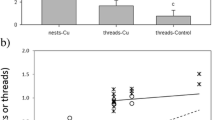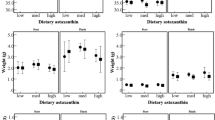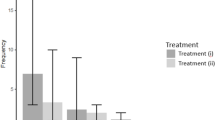Abstract.
In the fifteen-spined stickleback (Spinachia spinachia), the male alone builds a nest and provides care for the eggs until they hatch. The nest is made of filamentous algae held together with shiny secretional threads of a glycoprotein, here called tangspiggin. Tangspiggin is produced by transformed kidney cells. I investigated how tangspiggin production was related to food intake by giving males low or high food rations. Males in the high-food group produced significantly more tangspiggin than those in the low-food group. Since low food rations did not lead to a significant drop in resting metabolic rate (oxygen consumption), tangspiggin production appears to be one of the first energy-demanding processes to be dropped during food deprivation. Among males given equal food rations, females preferred to mate with those with elevated levels of tangspiggin in their nests. Tangspiggin threads may signal safety for the offspring by keeping the eggs within the nest and protecting them from egg predators. Moreover, the threads become less shiny with age, due to particle deposition, and older nests that may house older (more valuable) eggs are thereby well camouflaged. Tangspiggin provides an honest signal of male condition, acting as an extra-bodily ornament, signaling direct benefits to females or possibly also indirect benefits of "good genes" from a male who is a successful forager.
Similar content being viewed by others
Author information
Authors and Affiliations
Additional information
Electronic Publication
Rights and permissions
About this article
Cite this article
Östlund-Nilsson, S. Fifteen-spined stickleback (Spinachia spinachia) females prefer males with more secretional threads in their nests: an honest-condition display by males. Behav Ecol Sociobiol 50, 263–269 (2001). https://doi.org/10.1007/s002650100350
Received:
Revised:
Accepted:
Issue Date:
DOI: https://doi.org/10.1007/s002650100350




